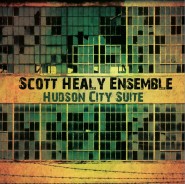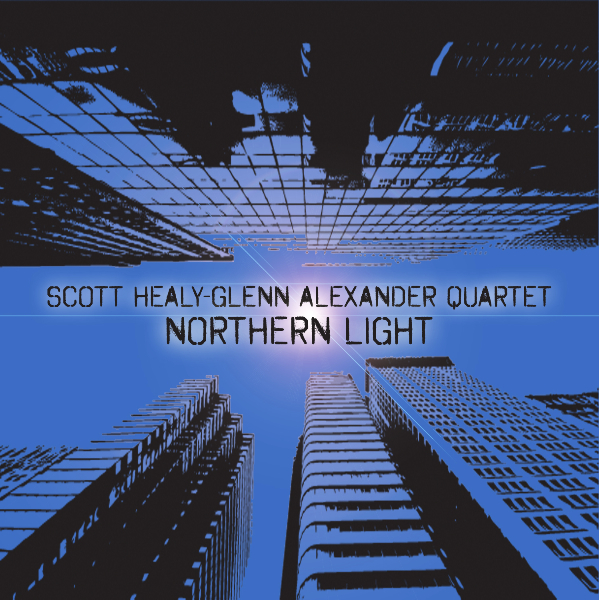I’ve written a lot of ensemble music where my intention was to create an improvised texture, or a feel of rhythmic and melodic freedom—fully notated music that sounds non-metered and non-harmonic. Sometimes it works, sometimes it don’t. In many instances one or more players are improvising along with the rest of the ensemble, not necessarily soloing in the traditional jazz sense, but working with material that I give them.
Writing jazz or jazz/classical crossover (Third Stream) music without specific chord changes is challenging, both for the composer and the player. Discovering and enacting your musical intent as a composer is the key to success in this style.
In other words, while there are many details to consider, the most important question to ask yourself is how do you want it to sound, and what do you expect from the players?
Where on the “free” spectrum do you want your piece to fall? Interestingly, the answer is sometimes counter-intuitive. I’ve found that while highly notated writing with complicated rhythms can sound free and meterless, it’s sometimes more effective to have the one or more of your players improvise within specific boundaries that you the composer establish.
As in traditional jazz styles, how you write for the rhythm section is the key.
There are a few ways to notate free playing for rhythm section, the box and arrow is a technique I’ve used a lot. Below is an excerpt from the drum and bass part to my very abstract arrangement of Ellington’s Solitude. I set up a figure for the drums, a rhythm, then box it, and let the player decide how to continue::

The drum part from a few bars of the bridge of “Solitude”. The score calls for the player to set up a rhythmic motif, then instead of having the player continue to read complex figures, draw a box around the general idea, draw a line with an arrow as far as it should go, then go back to standard notation. The player will start listening and reacting, then hit a cue, start reading again, perhaps having gained some new perspective on his role. There are some tricks for doing this on computer software.
Here’s the full score of the same excerpt looks with an audio below:

In jazz and some Third-Stream classical/jazz crossover music the bass and the drums interpret the time and the pulse, and how they support the ensemble will set the tone and the feel. In free playing you decide to free-up the rhythm section from straight, metered playing (such as a jazz beat in 4/4). Address your intent, both as it relates to the performance process and the result.
The drums start off supporting the ensemble figures, then diverge into an improvised part. The bass plays very simple part, in this case supporting the ensemble along with the bass bone. It’s usually important to cue a part like this in part in the drums, it will help him to mark the time. The free music is still marked by the grid of the slow 3/4 meter so everyone’s counting together, but the listener can’t hear the time, just the phrases.
Now consider how a “legit” classical or crossover ensemble might sound using the same technique. There might be some head-scratching at first, but most players these days are used to seeing all kinds of crazy stuff. Below is an example of box notation for “rhythm section”, in this case a percussionist and a bassist, from a piece of mine, “Club Soda (with a twist)” from 1999, as performed by the Aspen Contemporary Ensemble: The full score and full audio are at the bottom of this post.

The percussionist is already improvising on the cocktail drum set; he reaches to the vibes and plays a rhythm on a specified pitch, then the rhythm is boxed indicating to play freely. Same with the bass downward glisses. The drummer’s approach will naturally be percussive and not melodic, as he’s “limited” to one pitch (the stemless note in parenthesis above. The rhythm crosses the bar, but the pulse from the conductor is 3/4, which holds it all together.
Here’s the score of the same excerpt:

The clarinet and the trumpet are also playing box notation based on the established rhythm, the flute and the violin are playing spacial notation.
Here are some more points to consider:
•Realize that every performance will differ–you want that.
•The players will respond to what’s going on around them, they will be listening more than usual, seeking to interpret your intent, but also vibing with the other players. You want that too.
•The time feel floats, ensemble passages are not rhythmically supported because players are reacting to, not marking the ensemble’s figures by reading the cues, or specific parts. You’d better want that!
•Sometimes the music is more fun to listen to than to perform. Your relationship with your players will help them as they (hopefully) give full attention to your ideas.
•Maybe you want it to be fully “free”—no rhythm, no pitches, no chords, no cues, only improv–that can work great, especially for a rhythm section. So forget all the above!
In part two I’ll delve into pitched box and spacial notation, and free-style writing with no metric grid.
“Club Soda (with a twist)” (Scott Healy 1999) performed by the Aspen Contemporary Ensemble, George Tsontakis, conductor:
Club Soda With A Twist -full score
Free at last!








